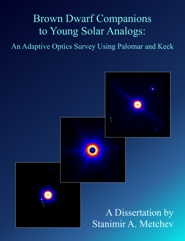

The results from the survey include the discovery of three new brown dwarf companions (HD 49197B, HD 203030B, and ScoPMS 214B), 43 new stellar binaries, and a triple system. The physical association of an additional, a priori-suspected, candidate sub-stellar companion to the star HII 1348 is astrometrically confirmed. The newly-discovered and confirmed young brown dwarf companions span a range of spectral types between M5 and T0.5, and will be of prime significance for constraining evolutionary models of young brown dwarfs and extra-solar planets.
Based on the 3 new detections of sub-stellar companions in the 101 star sub-sample and following a careful estimate of the survey incompleteness, a Bayesian statistical analysis shows that the frequency of 0.012-0.072 solar-mass brown dwarfs in 30-1600 AU orbits around young solar analogs is 6.8% (-4.9%, +8.3%; 2-sigma limits). While this is a factor of 3 lower than the frequency of stellar companions to G-dwarfs in the same orbital range, it is significantly higher than the frequency of brown dwarfs in 0-3 AU orbits discovered through precision radial velocity surveys. It is also fully consistent with the observed frequency of 0-3 AU extra-solar planets. Thus, the result demonstrates that the radial-velocity "brown dwarf desert" does not extend to wide separations, contrary to previous belief. View or Post a Review at Amazon.com